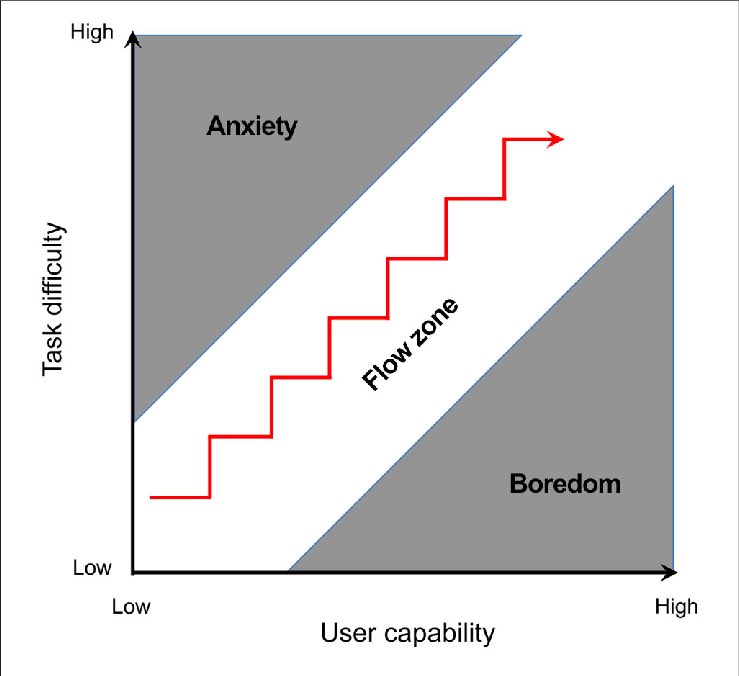So I’ve been thinking about EA putting a patent on an intricate dynamic difficulty system that in the patent refers to its use to be for player retention and while I don’t claim to know the inner workings of EA and its motivations, I wanted to take a stab at dissecting it: Thread
So from what I understand, the system in question has a way of analyzing player behavior from previous games in relation to a player’s predicted time spent in one play session and it uses that data to adjust difficulty dynamically.
I could be wrong in how it is used in the patent, but usually when we refer to player retention we use it to discuss overall retention of a player playing the game in recurring sessions and not within one play session. Retention data *usually* means if people come back to play.
Now, we also know that difficulty has a direct connection to flow and therefore enjoyment. Simplified, it means you want to bounce between anxiety and boredom in how you challenge players, making skill and difficulty related parameters for enjoyment.
To say it in a simplified way: if your player is more often in a state of enjoyment where they are challenged in just the right way and feeling flow state more often, they are more likely to stay engaged and enjoy themselves while playing the game.
Now, the vast majority of ethical game designers agree that mechanics that pressure your player into staying, usually dark patterns that relate to fear of missing out etc, is bad and that making time for players to step away is good design.
I personally don’t think a dynamic difficulty system is that. And automatically assuming that this system is evil because it links to retention is dishonest from what I can see with the parent. Every game cares about retention, that’s not inherently unethical.
Retaining your player base is a pretty normal thing to include in your game - of course we want people to play our game and come back to it. Otherwise we wouldn’t make it. We are however obligated to avoid dark and abusive patterns. Dynamic difficulty isn’t that.
Let’s also not forget that dynamic difficulty is a question of accessibility and a more modern approach of difficulty settings that reacts to the player instead of designers making up arbitrary difficulty modes that never fit your whole player base right.
Paired with other adjustable settings, a dynamic difficulty system can be really great and absolutely pro player kind of design.
I’d love to know more about how the system is reacting to existing user data, but I personally do not read this patent as ill-intended at all.
I’d love to know more about how the system is reacting to existing user data, but I personally do not read this patent as ill-intended at all.
Whether or not patents suck or not is a whole other discussion btw. But generally I’d like to see fewer outrage articles about why this is seemingly evil and more talk about actually analyzing the system and common practices in game development.

 Read on Twitter
Read on Twitter


